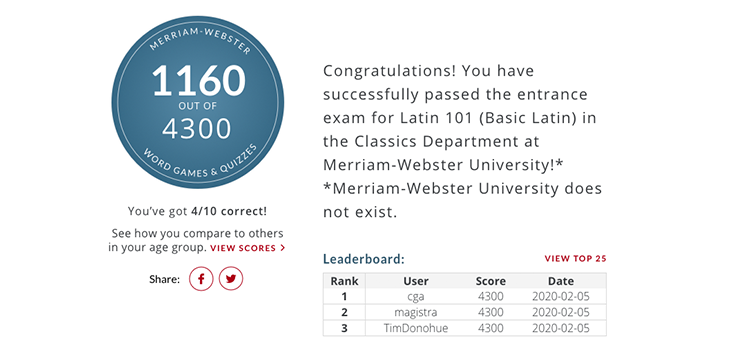Sometimes two ideas combine to create a compelling new concept. “Your chocolate is in my peanut butter!” “Your peanut butter is in my chocolate!” While I won’t claim this post will make you the Reese’s cup of your industry, I think there’s value in considering a mashup of two current branding trends.
The first is the concept of placemaking in urban environments. Spaces like these are designed to be focal points and gathering places for people, as opposed to simply serving traffic and shopping. This idea isn’t new — it’s been around since the 1960s or so — but lately I’ve been reading about some interesting high-profile projects in New York and elsewhere. In particular, many recent placemaking designs actively encourage people to make the space their own, often by incorporating movable elements such as tables, chairs, and even platforms.

Another example of place-making — Platform Park in Culver City. Designed by TERREMOTO.
© Stephen Schauer
Shortly after these ideas attracted my interest, I attended a session at the AMA Cincinnati Ignite Conference that focused on how the “customer journey” is changing. The speaker’s premise was that the traditional notion of a funnel, a pyramid, or some other single path that gradually draws the customer closer to a brand, is obsolete. Instead, he suggested today’s consumer is more like a ball in a pinball machine, bouncing around and encountering the brand at many different touchpoints (i.e. brick-and-mortar stores, social media, broadcast, print, etc.). As a result, each customer’s journey follows a unique path. A brand can attempt to shape, but can no longer completely control, this path.
The common theme in both of these notions is that people are increasingly finding their own ways to use or experience what’s being offered, whether it’s a physical space or a brand. What this means for branding in particular is that customers expect a greater sense of ownership. Social media has accelerated this trend by giving consumers a public feedback loop that can quickly affect a brand for good or ill.
A first glance, the “pinball effect” may seem to weaken the power of branding overall. In fact, it’s an opportunity to make potential customers or supporters more engaged by giving them a sense of ownership. And concepts from placemaking suggest ways to make this happen.
MULTI-BALL MARKETING
The key to thriving in the “pinball” environment is to create a brand experience that your audience can have some agency in crafting. But how do you allow them to shape the brand experience without losing control? Two strategies are critical to pulling this off: consistency and interactivity.
We’ve talked about consistency a lot here, so I’ll recap the basics quickly. No matter where your brand appears, it needs to convey the same message. You can vary the approach to suit a particular channel — being a bit more relaxed on Twitter than on LinkedIn, for example — but in general your brand needs to have the same look and feel and convey the same personality wherever a prospect encounters it.
Knowing what the customer wants and which channels they use most are vitally important, because allowing them to choose where they interact with the brand is an easy way to give them choices. The initial sale is a classic example: some buyers may prefer to order by phone, others want the speed and convenience of ordering online, still others want to walk into a building and spend a few minutes chatting with a salesperson before they buy.
COME PLAY IN OUR SANDBOX
Interactivity comes into play throughout the customer journey, but it’s especially important before the first sale. Your prospect is asking the question “what if” at this stage. Providing opportunities to experiment with your offering creates compelling hooks for engagement.
IKEA’s online planning tools provide an excellent example of this type of interactivity. These web-based tools allow you to design your kitchen, living room, storage unit, or even an entire house. They can be used at home, where you can see the space you’re planning, or in an IKEA store, where you can get help from a salesperson who knows the brand and the software. You can spend hours creating a perfect custom design, or start with suggested templates for a quick in-and-out. When you’re done, you can order all the components for your custom design and have them shipped directly to your front door. At no time during this experience does IKEA lose control of the brand. There are literally thousands of choices for the customer to make, but everything happens inside IKEA’s “walled garden.”
At no time during this experience does IKEA lose control of the brand. There are literally thousands of choices for the customer to make, but everything happens inside IKEA’s “walled garden.”
PLAYFUL INTERACTION CAN DRIVE ENGAGEMENT
Another brand that’s using the same concepts, though in a very different way, is Merriam-Webster. Here’s a brand that could very well have been made obsolete by the many free dictionaries on the internet. Instead, they’ve embraced the new technology with a vengeance.
It started with the bold move of giving the brand a personality that’s quirky, funny, and even snarky — yet still smart and informative. This immediately sets it apart from every other dictionary out there, and using this voice consistently reinforces its distinctiveness. Blog posts have whimsical headlines like “The Good, The Bad, & The Semantically Imprecise.”
The interactive component is provided by a robust content machine that reaches out to audiences on social media. They also encourage regular visits to their website with “sticky” features like the Word of the Day, word games, quizzes and so on. Once you’ve been reeled in by the funny stuff, you’ll find other intriguing and useful tools — not just the dictionary and the thesaurus, but tips on common grammar questions (e.g. the difference between “hanger” and “hangar”), a vocabulary app for kids, and the ever-useful Scrabble® Word Finder.
 All of this can look very spontaneous, but it’s actually handled in a deliberate and purposeful way. In fact, even Merriam-Webster’s people maintain their brand personality. In 2018, I attended a lecture at the Chautauqua Institution presented by Kory Stamper, lexicographer for Merriam-Webster. Her presentation was delightful, funny, and, yes, at times snarky, talking about what a lexicographer is, how words get into the dictionary, and including the controversial word, “irregardless.” And she had purple hair and fun glasses. She was completely on-brand, so the next time an attendee visited their website, they would feel right at home.
All of this can look very spontaneous, but it’s actually handled in a deliberate and purposeful way. In fact, even Merriam-Webster’s people maintain their brand personality. In 2018, I attended a lecture at the Chautauqua Institution presented by Kory Stamper, lexicographer for Merriam-Webster. Her presentation was delightful, funny, and, yes, at times snarky, talking about what a lexicographer is, how words get into the dictionary, and including the controversial word, “irregardless.” And she had purple hair and fun glasses. She was completely on-brand, so the next time an attendee visited their website, they would feel right at home.
MAKING IT WORK FOR MORE SERIOUS BRANDS
Your brand doesn’t have to be whimsical to create an engaging interactive experience. For example, most people first interact with Hospice of Cincinnati when a loved one is dying.
Here’s an example of a brand experience that must be more carefully crafted than most, because their primary audience is dealing with feelings of sadness, stress, and even despair. At the same time, they must also appeal to the donors who make it possible for the organization to continue its work. There’s a lot of crossover between these two audiences, who are often the same people at different times.
 A consistent personality remains vital to both of these audiences. It’s about compassion, caring and being present for people in the final stage of life. That message is reinforced in their literature, their website, on social media.
A consistent personality remains vital to both of these audiences. It’s about compassion, caring and being present for people in the final stage of life. That message is reinforced in their literature, their website, on social media.
Interactivity plays a lesser role for Hospice than the other brands we’ve highlighted, but it’s still a component. For example, the website offers multiple entry points — a clear path for those who need Hospice services, and others for potential supporters.
Content published online often has less to do with direct interaction than with shaping the brand’s reputation or raising awareness. For example, a Facebook post might highlight the value of an individual's experience with Hospice for themselves or their loved one. Outreach is also used to highlight services the public isn’t as familiar with, such as free resources for grieving adults and children.
LOOK FOR OPPORTUNITIES AT EVERY STEP
The customer journey may be more complicated and self-directed than it was in the past. Whether the market is best represented by a funnel, a hook-and-line, or a pinball table may be open to debate, but the basics remain the same: know how your audience finds you, and look for ways to engage them each step of the way, no matter how convoluted the path. This may mean casting a wider net than in the past, but a consistent approach that encourages interaction will allow you engage buyers in more ways while giving them feelings of participation, belonging, and loyalty.
What do you think? How are you letting your audience or your customers craft their own experience?








